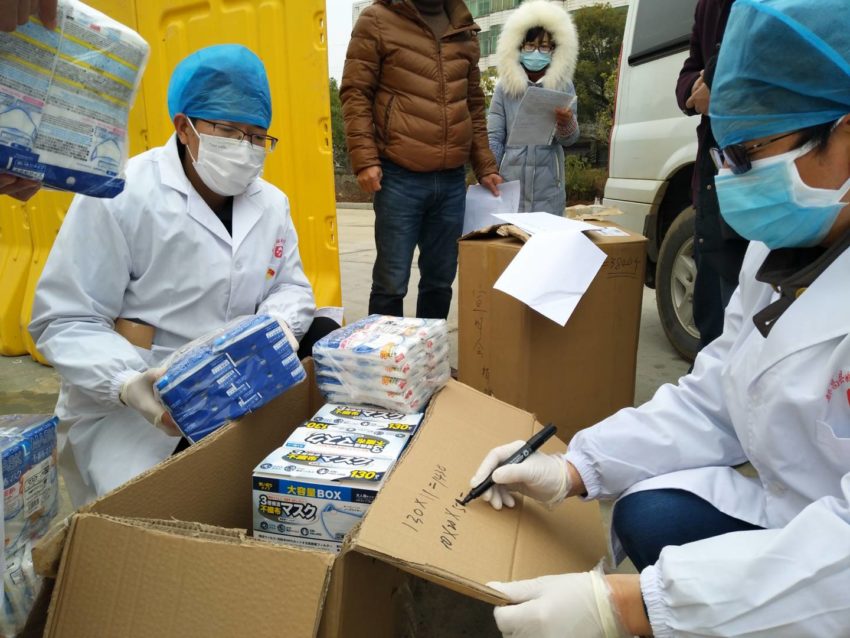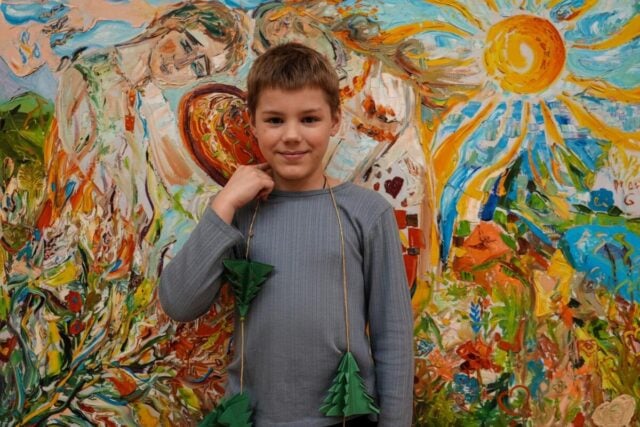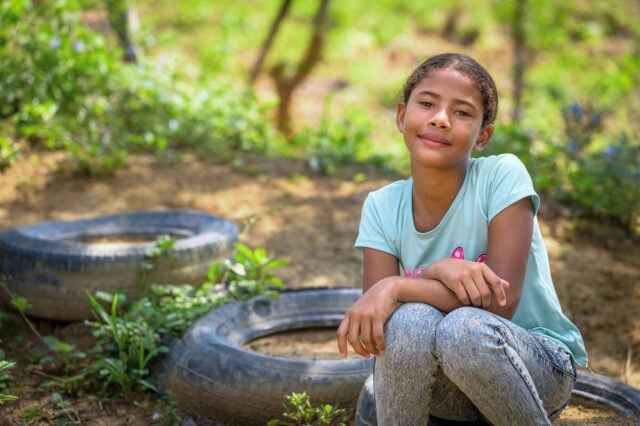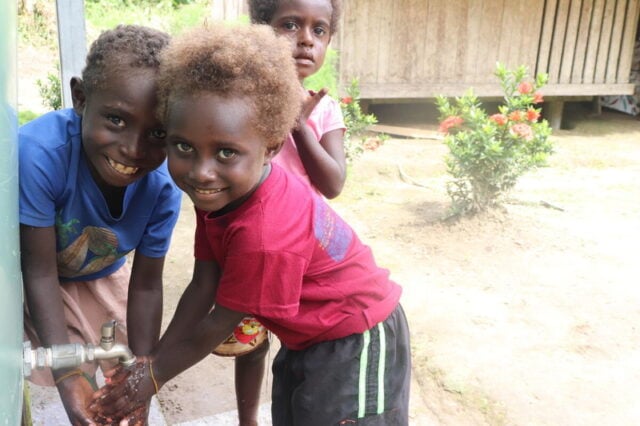Everywhere World Vision works, strengthening healthcare systems and workers is a priority. And it’s one of four key objectives of our global coronavirus response.
Our partnerships range from one-room health clinics to national ministries of health. Among the healthcare workers in the global fight against COVID-19 are 220,000 World Vision–trained and supported volunteer community health workers. They are our direct link to vulnerable families and villages, especially during times when staff are unable to travel to more remote parts of the communities they serve. Community health workers are affected by the coronavirus pandemic just like their neighbors. At the same time, their outreach — both in person and by social media — helps to control the disease’s spread.
“If you ask me if I’m scared, yes, I am,” says 56-year-old Marilyn, a community health worker in the Philippines. But she says that personal protective equipment supplied by World Vision gives her the courage to continue to monitor children’s health and promote coronavirus prevention in her community. And as job losses and financial constraints affect more of the families we serve, she and other World Vision–trained volunteers will help maintain children’s well-being.
The most elementary and effective method of preventing COVID-19 is handwashing, yet globally, 1 in 4 healthcare facilities lacks a basic water supply, 1 in 5 lacks sanitation facilities, and 1 in 6 lacks a proper hand-washing facility at the point of care, which means that healthcare workers don’t have a place to wash their hands between patients. That’s been the case in most places where World Vision is empowering children and families, and it’s something we’re working hard to change.
Before the COVID-19 pandemic, World Vision had set a three-year global goal of bringing clean water and sanitation to 800 more rural health facilities and the 7.2 million people who depend on them by 2021. We achieved nearly half of that goal in 2019. Now, the spread of the new coronavirus makes our work more urgent.
Global coronavirus reponse
Since 1993, our staff in China have been working with at-risk children to improve their education, health, and protection. So World Vision was able to hit the ground running when the coronavirus emerged, distributing essential supplies to protect sponsored children, their families, and healthcare workers.
World Vision began supplying surgical masks and medical equipment to hospitals in China in early February. By June 12, we had distributed more than 450,000 masks in nine provinces, along with gloves, goggles, and disinfectant solution. We’ve also provided school hygiene boxes and family packs containing hand sanitizer, soap, towels, thermometers, and health education booklets.
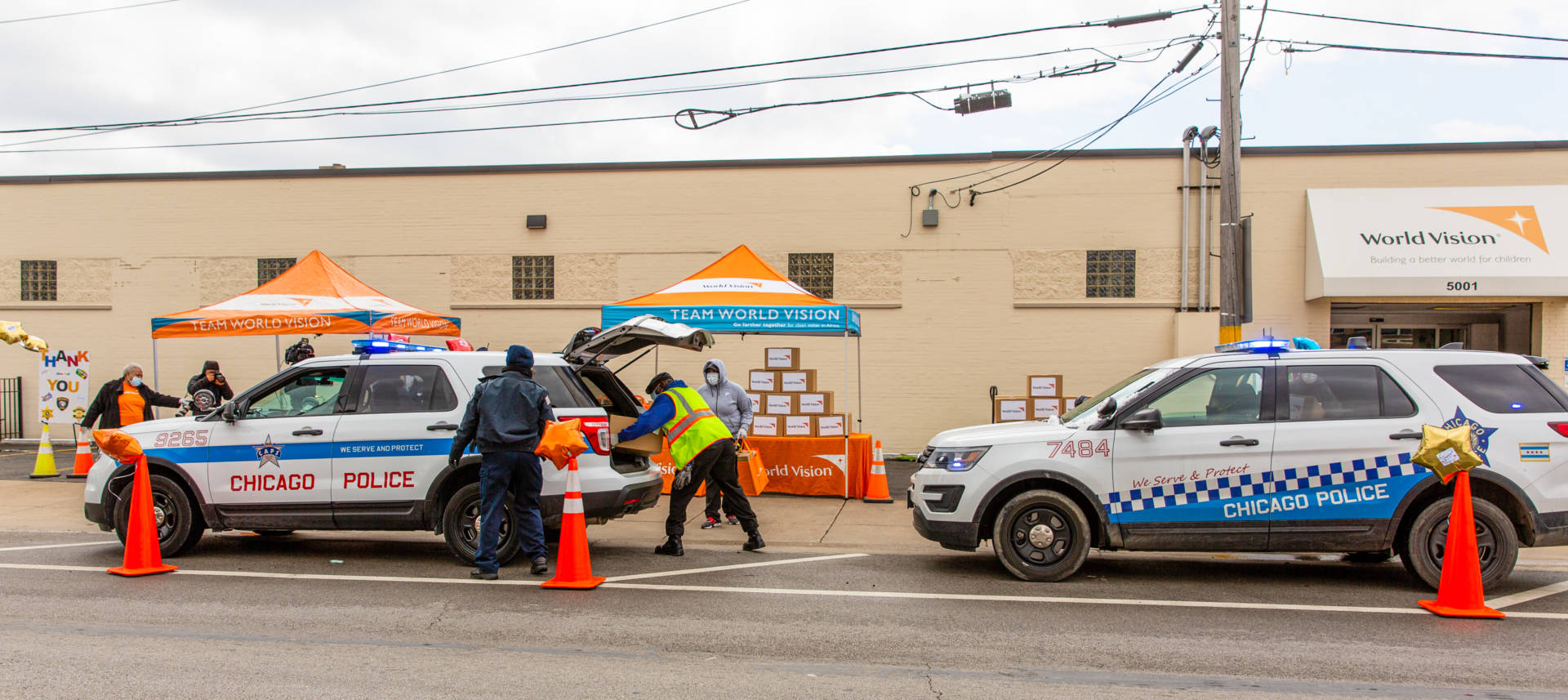
U.S. coronavirus response: ‘The tables are turned’
Sixty first responders gathered outside World Vision’s Chicago Storehouse on April 15 to receive personal protective equipment and be celebrated for their monumental efforts.
Jonathan Smith, World Vision’s site manager in Chicago, explained that the team wanted to encourage the first responders plus provide them with supplies that will keep them safe as they do their jobs.
Chicago Fire Department Deputy District Chief Scott Ronstadt says the department buried one firefighter on April 13 only to learn two days later of the death of another colleague due to the coronavirus.
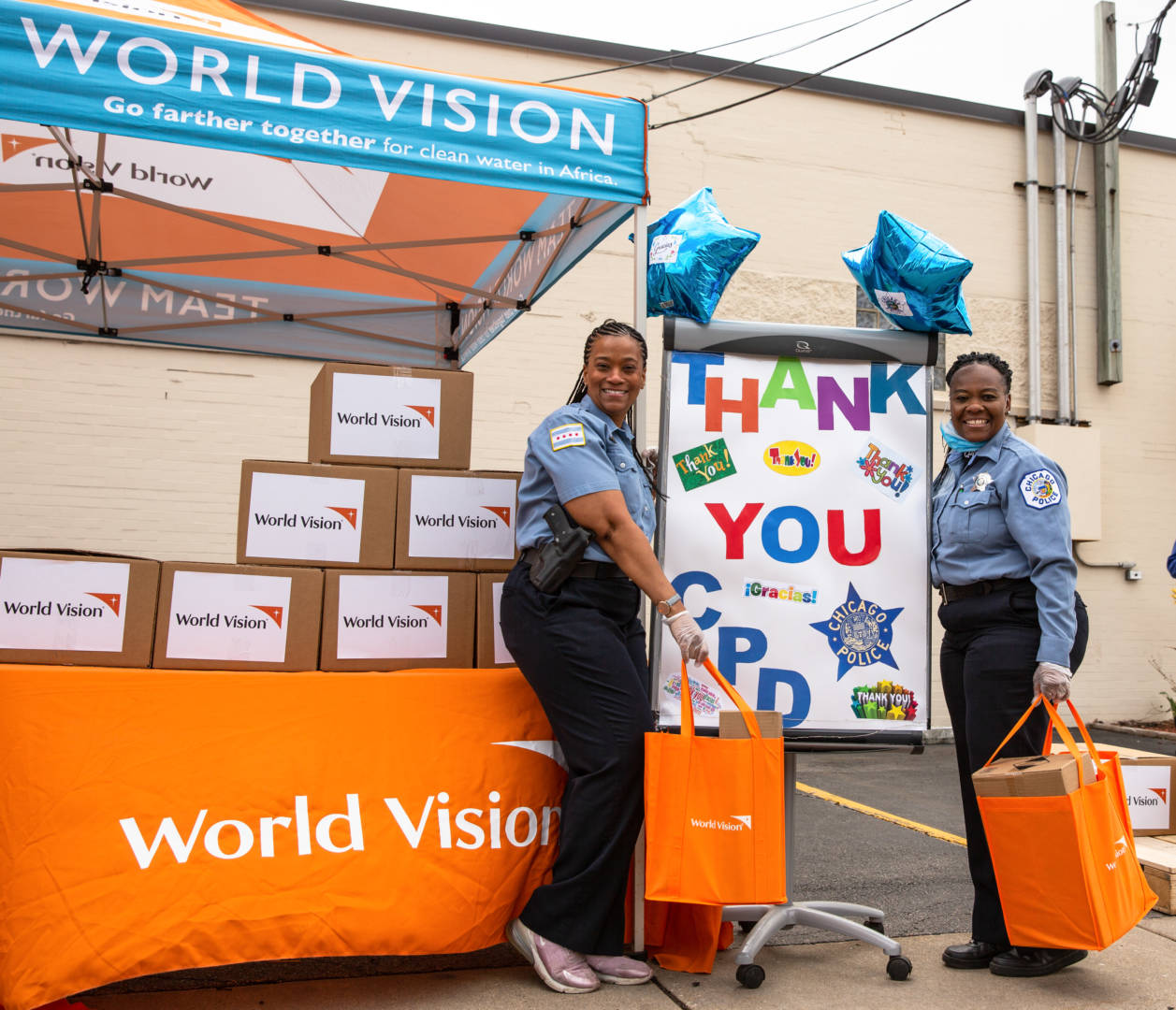
About the distribution, he says, “It’s an odd feeling because we’re normally the ones people call for help. When they’re having a bad day, they call us. And now it’s kind of like the tables are turned, and we’re in need of assistance, and it’s amazing how much help we’re receiving. So, it’s definitely a heartwarming experience — being on the other side, the receiving end, now.”
The gathered first responders received a total of 75 box lunches, 3,000 pairs of gloves, 3,000 masks, 5,000 bottles of hand sanitizer, and 100 units of disinfectant wipes that day. By early June, World Vision had delivered more than 187,000 personal protective equipment items to medical facilities and first responders across the country.
Kari Costanza, Sevil Omer, Lauren Reed, Kathryn Reid, and Laura Reinhardt of World Vision’s U.S. staff contributed to this story.
